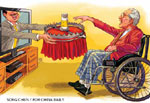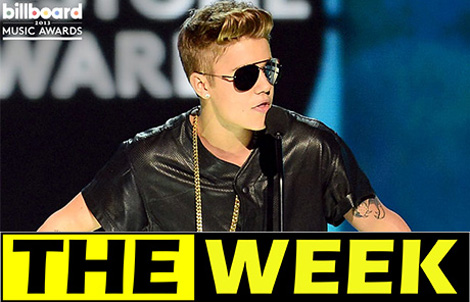Time to lay the Marlboro Man to rest
Updated: 2013-05-31 07:14
By Michael O'Leary (China Daily)
|
|||||||||||
Further, outdoor advertising of tobacco products, including on billboards, is not banned. Point of sale and Internet advertising of tobacco products is also allowed. New media including micro blogs are also beyond the scope of the existing Advertising Law. And tobacco products are also sometimes promoted through indirect forms of advertising and marketing, such as sponsorship of organizations and events, as well as "brand stretching" the use of tobacco brand names on non-tobacco merchandise or services.
According to the Global Adult Tobacco Survey conducted in China in 2010, 19.6 percent - or one in five adults - reported that they had noticed tobacco advertising, promotions or sponsorships via the media or in public places during the 30 days prior to the survey. Worryingly, nearly three in 10 young people aged 15 to 24 - 27.5 percent - reported noticing tobacco advertising, promotions or sponsorships.
Other studies have also shown very high levels of exposure to indirect promotion of cigarette smoking through the entertainment media in China; according to the International Tobacco Control Policy Evaluation Project, 81 percent of smokers and 85 percent of non-smokers report having seen people smoking in the entertainment media "often" or "once in a while".
China is not alone in needing to strengthen its existing restrictions on tobacco advertising, promotion and sponsorship, as well as their enforcement.
Despite the effectiveness of comprehensive bans, WHO estimates that only 6 percent of the world's population was fully protected from exposure to the tobacco advertising, promotion and sponsorship in 2010.
Some important steps toward strengthening restrictions on tobacco advertising, promotion and sponsorship in China have been taken in recent years. In addition to the direct advertising ban, in February 2011, the State Administration of Radio, Film and TV announced strict controls on the portrayal of smoking in movies and TV serials.
In December 2012, the government issued the China National Tobacco Control Plan 2012-15, which includes a strong commitment to strengthening existing bans on tobacco advertising, promotion and sponsorship.
The China National Tobacco Control Plan also includes the ambitious target of reducing the adult smoking rate from the 2010 rate of 28.1 percent to 25 percent in 2015, and an even more ambitious target for reducing the youth smoking rate, from 11.5 percent to below 7.5 percent in 2015.
These targets will only be achieved through the implementation of strong policies to reduce demand for tobacco, including comprehensive bans on all forms of tobacco advertising, promotion and sponsorship. But when they are, hundreds of thousands, if not millions, of lives will be saved.
So on World No Tobacco Day 2013, its time to consign all forms of tobacco advertising, promotion and sponsorship, including the Marlboro Man, to history, for good.
The author is the World Health Organization's representative in China.
Related readings:
Total ban on tobacco ads needed
Survey leaves anti-tobacco advocates angry
Expert promotes comprehensive ban on tobacco ads
Say no to tobacco
Ban on tobacco firms' donations urged
Tobacco companies go online for ad space
Today's Top News
China corrects Japan on treaty's Diaoyu implications
Manila condemned over grounded warship
Russian envoy vows to boost ties
EU to step up investment in China
Higher education goes global
Plastic ban fails with ultra-thin bags
Flow test for water project gets underway
Campaign to help moms find breastfeeding rooms
Hot Topics
Lunar probe , China growth forecasts, Emission rules get tougher, China seen through 'colored lens', International board,
Editor's Picks

|

|

|

|

|

|





